What the heck is an AR-15 dissipator?
To be honest, it sounds like something out of a sci-fi flick. But it’s not. It’s a real term within the gun world.

By this point, you’re likely scratching your head, wondering what it means.
So, fear not…
Today, we’re tackling AR-15 dissipators to help you get spun up. We’ll go over the definition, pros/cons, and whether the design is still useful in this day and age.
Table of Contents
Loading…
AR Dissipator Defined
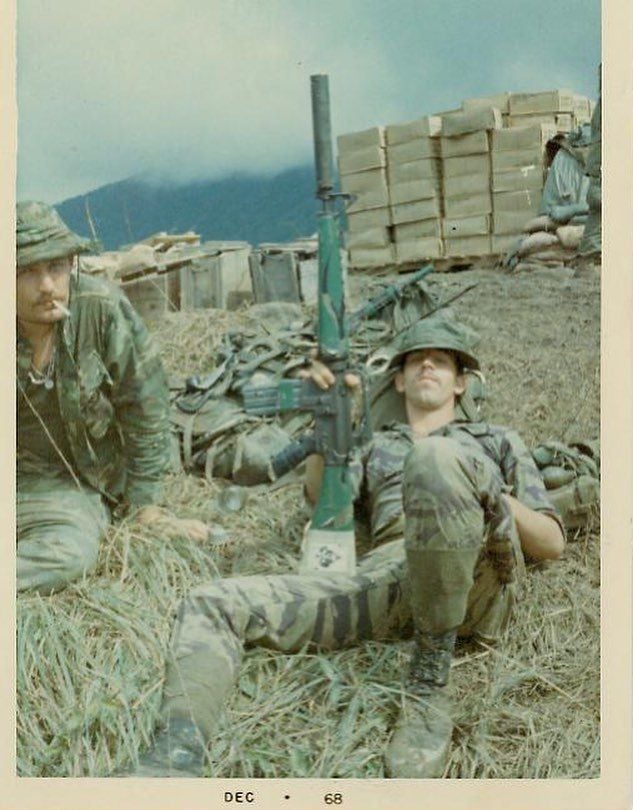
A “dissipator” or “dissy” is an AR-15 with a 16-inch barrel but with a rifle-length front sight post.
There’s some controversy about who invented what, but they can first be seen in Vietnam-era photos. Where does the name come from?
Colt originated the design with the Model 605, but Bushmaster called it the Dissipator.
Why? Well, their variants utilized heavy profile barrels and heat-reinforced handguards—this dissipated heat.
Thus, the name dissipator was born! Although, I still like the idea of it being a space gun.
Why were they used, you ask?
The concept of the dissipator hinged on two positives:
- A shorter barrel allows better maneuverability and weight savings
- A longer sight radius allows for better accuracy
A Little History
Colt created the Model 605 by cutting existing 20-inch rifles down to 15 inches. However, this led to reliability issues due to changes in the overall timing of the rifle.
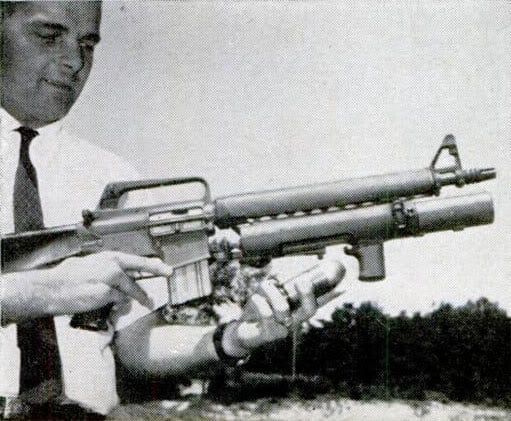
Cutting down the extra inches reduced the “dwell time,” which is the amount of time the weapon maintains pressure so it can cycle.
You can think of it as the amount of time the bullet stays in the barrel after it passes the gas port. In the dissipator barrel below, there’s almost no length left for the bullet after it passes the gas port, which made the weapon unreliable.
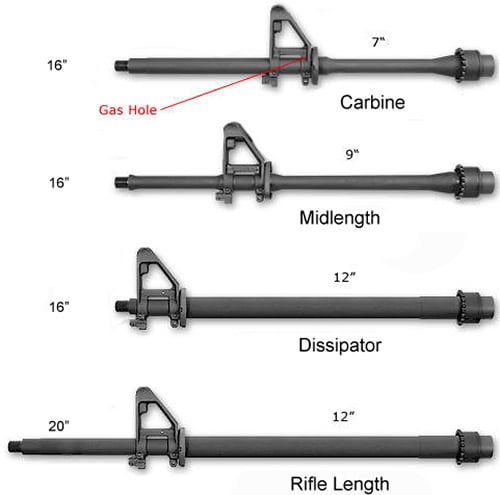
Modern Dissipators
Bushmaster came out with the first civilian AR-15, actually named the Dissipator, which had shaved-down gas blocks at the normal carbine length and then a “dummy” A2 sight block up in front at the rifle position.
While no longer made new, they can be found at places like Gunbroker.
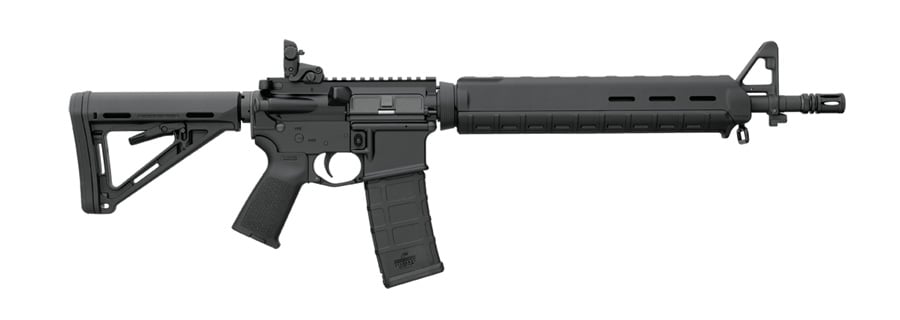
PSA also offers its mock version of the dissipator with a mid-length gas system.
Prices accurate at time of writing
Prices accurate at time of writing
-
25% off all OAKLEY products - OAKLEY25
Copied! Visit Merchant
However, there are still some “real” dissipators out there with enlarged gas ports and just one real front sight/gas block at the rifle position that have since solved the reliability issues. Del-Ton is the one that stands out.

Pros & Cons
Using a proper full-length rifle gas system, a dissipator provides a smoother overall shooting experience – we’re talking about a serious reduction in recoil and muzzle rise.
The longer gas system makes the weapon a lot less violent in its operation.
If you’ve ever fired a full-length rifle AR-15, then you know the joy of a full-length gas system.
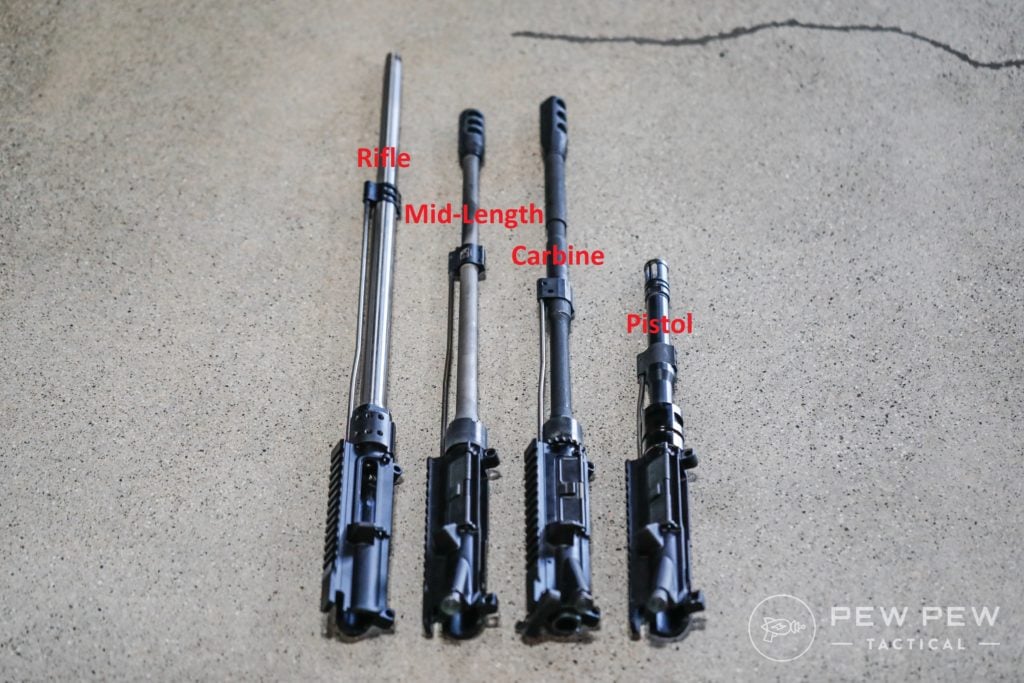
Sure, the loss of barrel drives up muzzle rise and concussion, but a dissipator does wonders for reducing recoil and providing a smoother shooting experience.
The lower recoil and enhanced control make the rifle more controllable.
And the purpose of a shorter rifle is to excel in close-quarters combat, so less recoil and muzzle rise result in a more efficient close-quarter rifle.
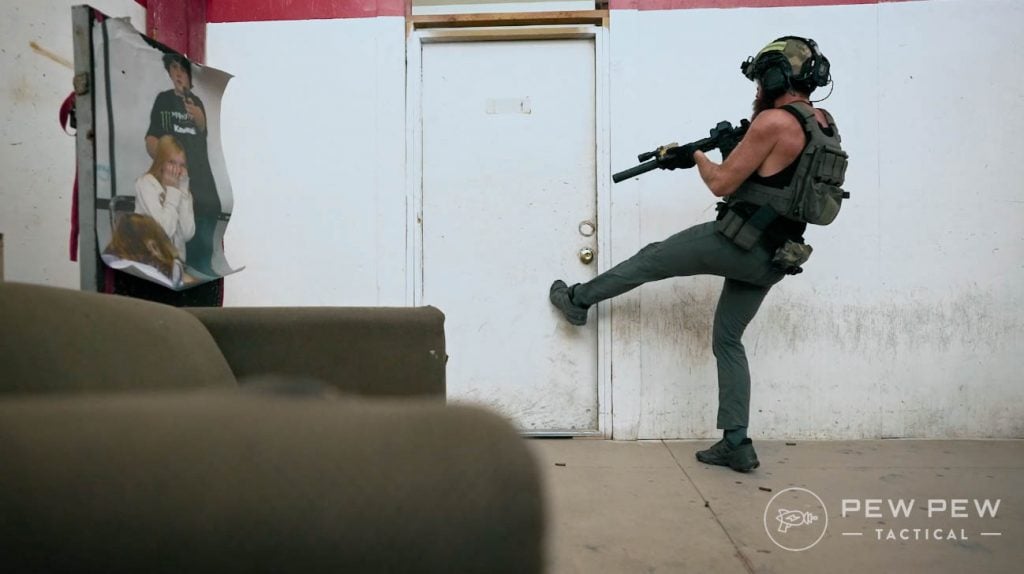
We’ve already gone through the major pros with shorter barrels and a longer sight radius.
Some other advantages include a longer handguard which allows a more forward hand placement, protection from a hot barrel, and more space to accessorize.
And lastly, they bring an old-school kind of cool that resembles a short-barreled rifle (SBR) from far away.

Some of the cons include reliability and weight.
While reliability has mostly been fixed with gas blocks at carbine or mid-length positions, this adds additional weight from “dummy” gas blocks/sights at the front and longer handguards.
But “real” dissipators with just one gas block at the rifle position also have fixed the weight issue with enlarged gas ports.
How to Make a Dissipator Work
As mentioned, a few companies produce dissipator uppers with mid-length gas systems that work reliably without issue.
The downside is you lose the ultra-smooth running nature of a full-length gas system.
During Vietnam, they couldn’t figure out how to make the classic Colt work. Well, they did in one way. Look at the two photos of soldiers wielding dissipators below.
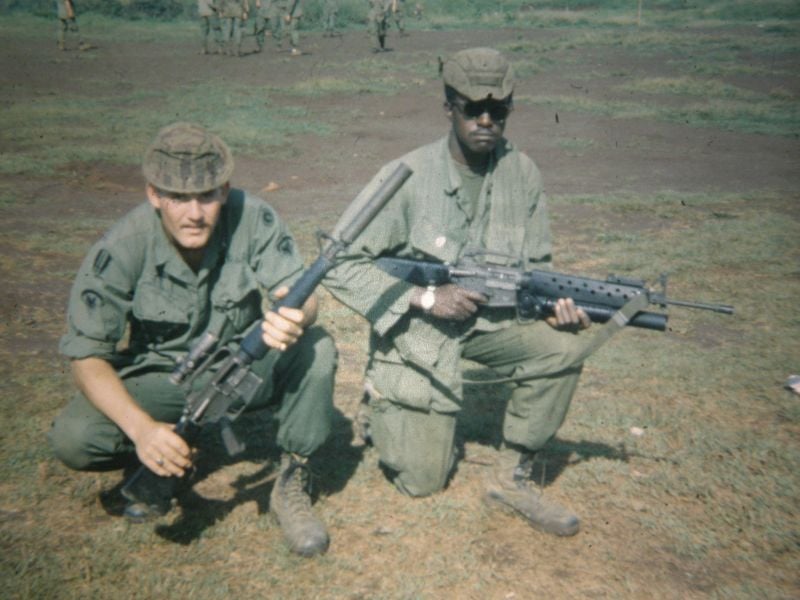
What are they carrying?
Besides the sick drip that is Vietnam uniforms and camouflage…suppressors! Suppressors don’t increase dwell time, but they do increase pressure.
Dwell time increases pressure, and if the suppressor increases pressure, then boom, a suppressor makes a dissipator reliable. That’s just one way to do so.
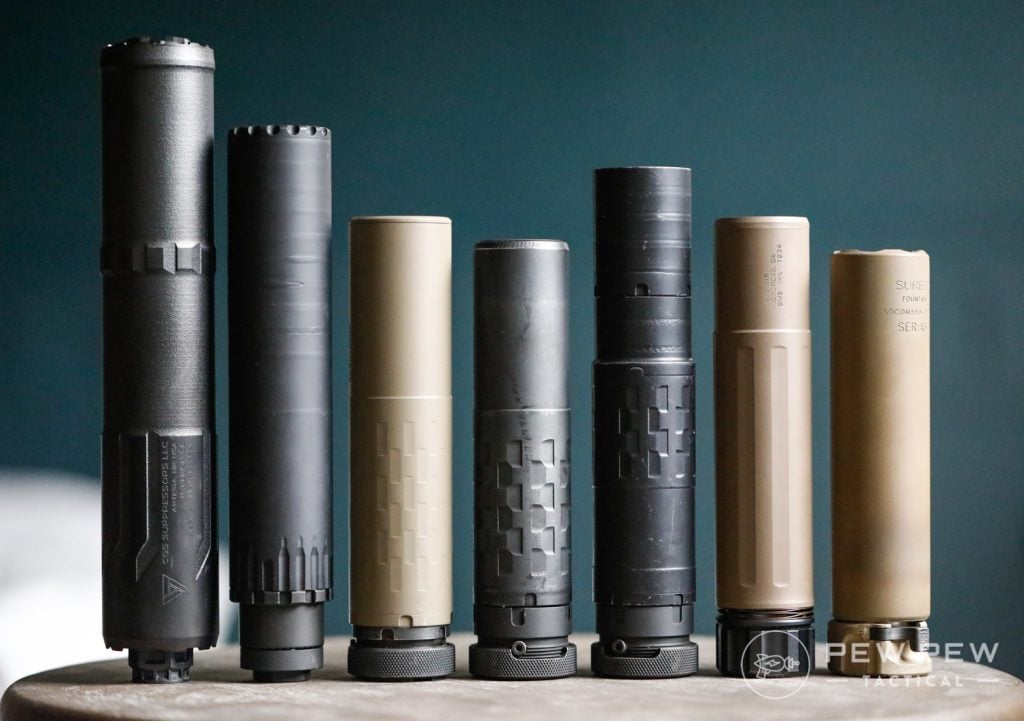
Suppressors are an expensive option that can be restricted in several states. So, the other solution comes from a modern carbine; in some ways, it’s a descendant of the Dissipator.
The Navy’s finest Mk18 series rifles found a way to make rifles with short dwell times work.
When we look at dwell times, the Mk18 series has less than the Dissipator. Yet, it’s still the number one choice of special ops bubbas who need a close-quarters combat weapon.
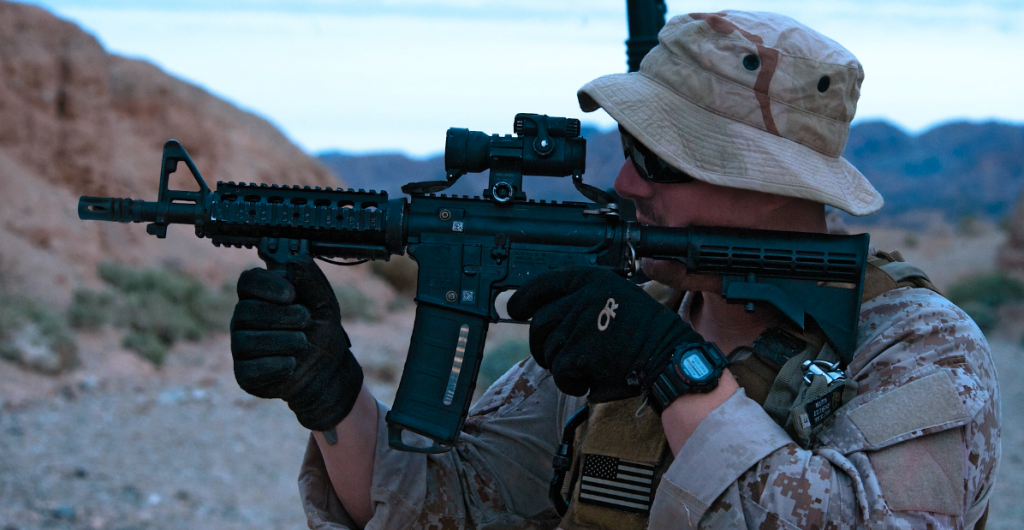
They did something simple and ingenious — opened up the gas port! This leads to more pressure and gas to make the weapon run reliably.
Del-Ton did this as well, making the only true dissipator currently on the market.
This allows you to have a reliable, smooth shooting rifle.
Admittedly, the oversized gas port can reduce the smoothness a touch, but not enough to make it a less enjoyable experience.
Is the Dissipator Still Useful?
With today’s free-floating gas tubes and shift toward optics, does the dissipator still have a place?
Our answer is yes if you are ONLY going with iron sights.
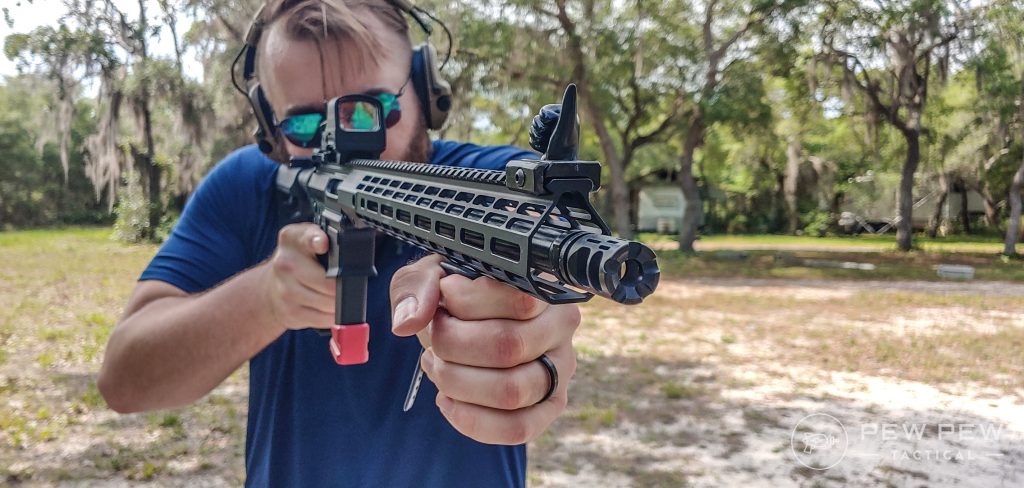
Otherwise, there are too many other options to get the same advantages of a shorter barrel and more accurate sights with a reliable red dot and holographic sights.
Now if you’re making a cool clone rifle, then there is always a place for the Dissy. But you should go with one that is properly made so it can be reliable.
Final Thoughts
While AR-15 dissipators aren’t as popular these days as they were during the Vietnam era, they still are a cool feature — especially when viewed through the lens of history.
Did you know what a dissipator was? Let us know in the comments below. Also, be sure to check out our definitive resource for all things AR-15 Rifles.

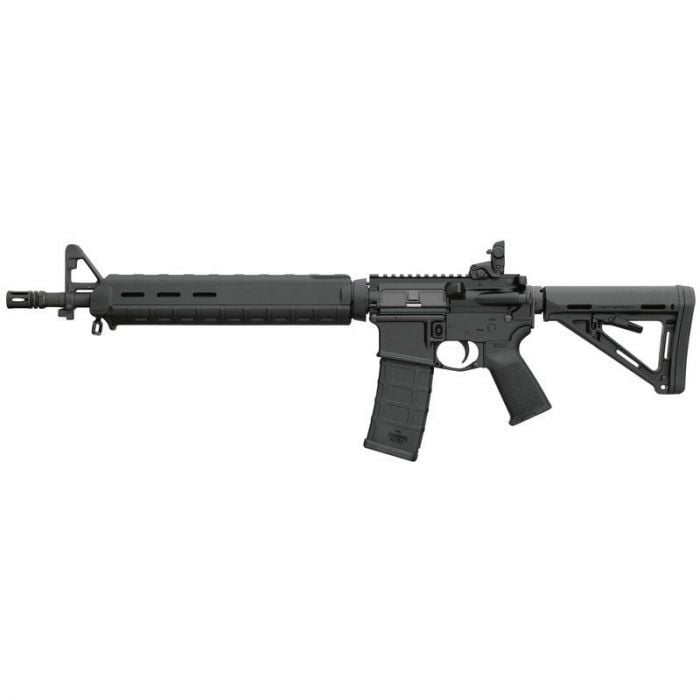

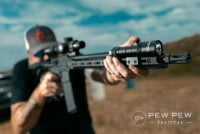






21 Leave a Reply
windam weaponry has a nice dissipator in two models..one is a heavy barrel and one in m4 step barrel.. both have the m16 carrier groups too..same as the old bushy...currently made and in stock.. check out gundeals
WW is currently out of business, sadly. Get their Dissipators while you can.
In the larger world of cartridges in rifles, 5.56 is already "soft shooting."
The gas port picks up a different amount of pressure at each different position on the barrel - near the chamber its running 55k psi, as the bullet moves down the barrel the VOLUME of the bore expands which DROPS the pressure. Pistol is higher than carbine is higher than mid length is higher than rifle, tapering down to 26K or less. What will happen when you open the port up is to get more volume of gas, not "higher pressure." That is exactly what happens when you add a silencer - the baffles trap more gas - which is why it blows back out the chamber down the upper and out the charging handle. And why some use adjustable gas blocks to tune the action . . .
Rifle gas on midlength barrel, bore a larger gas port, then choke it down to where it cycles, not batters. Done. Silencer shooters have been doing this a long time.
My 2 cents.
A proper dissipater is a rifle length gas system on a 16-15" barrel. Can you make something like this work? 2 ways; firstly using a can really is the most direct solution, secondly, find a way to expand the gas port... assuming you can get enough volume down the gas tube into the bold you'll be ok. doing both at the same time, not likely a good idea. Honestly a dissipater w/o a can is gonna be horrible to shoot. Over gassing the system to make it reliable will make it kick more and potentially gas out the shooter.
Cool photo of New York and Jackie. The under is a M203 with the A-1. M79 was a 40mm grenade launcher. Never saw one with my time with the 25th ID.
M79 was a "stand alone" launcher with it's own buttstock.
(For those who need clarification* )
My first build was a dissappear, from Del-Ton. Have had it for 6 years now. It is fun to hit steel with iron sights only with the setup.
The dissipator is still completely relevant without irons. In fact I claim that most 16" rifle builds should be configured with rifle-length gas. A mk18 with its 10.3" barrel and carbine length gas system has LESS dwell time than a dissipator AND requires more gas to function. Why? Shorter gas systems extract sooner and under more pressure. Because of this they often require more buffer mass to further retard extraction further increasing the gas required. Does anyone describe their mk18 as unreliable?
With a rifle length gas system in a 16" barrel you get buttery extraction that requires the least amount of reciprocating mass to function reliably. It's gentle on parts and on brass. Less reciprocating mass requires less gas which is ideal because of the dissipator's low dwell time. Less reciprocating mass also means the gun shifts less as the action cycles. Dissipators may seem old timey but the recipe works and with today's selection of parts a dissipator is inherently more reliable than a mk18 with performance approaching that of a dedicated race gun.
You missed the biggest advantage of a dissipator: The rifle length gas system makes the rifle very, very soft shooting.
I have a Dissipator with a YHM flip up/down FSB, I love it, heavy bbl, detachable carry handle. Theres practically no recoil. I can stay on target better with it than I can with other gas lengths regardless if I use the irons or glass.
meh, just get a mid length, better of both worlds.
The Bushmaster Dissipator was named that for its heavily ventilated full length handguards with built in heat shields, to "dissipate" heat from rapid fire. This in combination with the HBAR chrome lined barrel made it run cooler, and as the other poster said, with a lower recoil than standard M4 carbines. And it maintained the full length A2 sight picture for accuracy with iron sights. Bushmaster started making these in the late 90s without a threaded barrel and flash hiders to skirt the Clinton AWB. Back then they actually came with Colt sourced chrome HBAR barrels, and are extremely well built. They started threading the barrels and adding hiders after 2004. The "postban" Dissys are actually 1" shorter than comparable M4 style carbines because of the lack of flashhiders. They are smooth shooting iron sight rifles that are too often bastardized to compete with current trends. Hope this helps.
fyi: Bushmaster was producing their Dissipator model BEFORE the 94' AWB and using their own marked standard weight 1/9 twist barrels ( not Colt HBAR) in the process.
Yeah I have one. California Pre-ban RAW, with all the evil features.
Bushmaster is the evilest of the evil. :-)
Mine has the heavy profile barrel, straight fluted to reduce the weight and increase stiffness.
I put a Smith’s Vortex flash hider on it to increase the evilness.
Mine was born out of a 20" A2 Hbar. It ran perfectly with an enlarged port (0.110") and fixed stock/rifle buffer. When going to a collapsible stock/carbine buffer it became a single shot. A lighter action spring fixed the reliability issue at the expense of smoothness. With some experimentation it was found the light spring with an H3 buffer closely mimicked the original configuration and it then worked with Russian steel cased on up.
It's an excellent, accurate rifle with an old school cool factor. The ninjas tell it's no longer relevant but it's been working just fine for the 19 years I've had it, save for the minor tuning issue.
Thanks for the insight Rick!
I also disagree for the same reason. The rifle gas system on a shorter barrel produces a vastly different much more light and smooth recoil impulse that leads to a gun which is more controllable under rapid fire. I've heard of some 3 gun guys running similar setups where lighter recoil and quick transitions are necessary, however they're guns are usually highly tuned. I personally run a dissy and it is in my opinion I like it much better than a carbine gas system.
Thanks for your comment, love that readers can see other viewpoints! Sounds like a side-by-side comparison of the recoil impulse is on my to-do list.
I'd be more than happy to share my dissy experience thus far. They're great guns and we'll worth the time and effort that some take to get running reliably.
That's interesting thanks for posting it
I disagree, the longer gas system provides a smoother running/lower recoil impulse. It is desirable to some shooters.